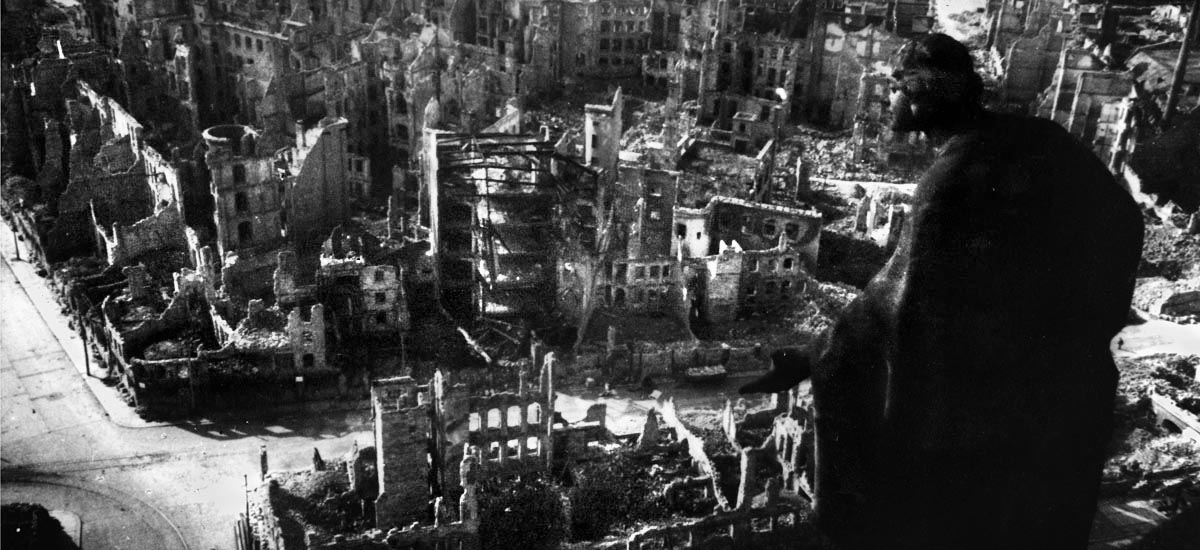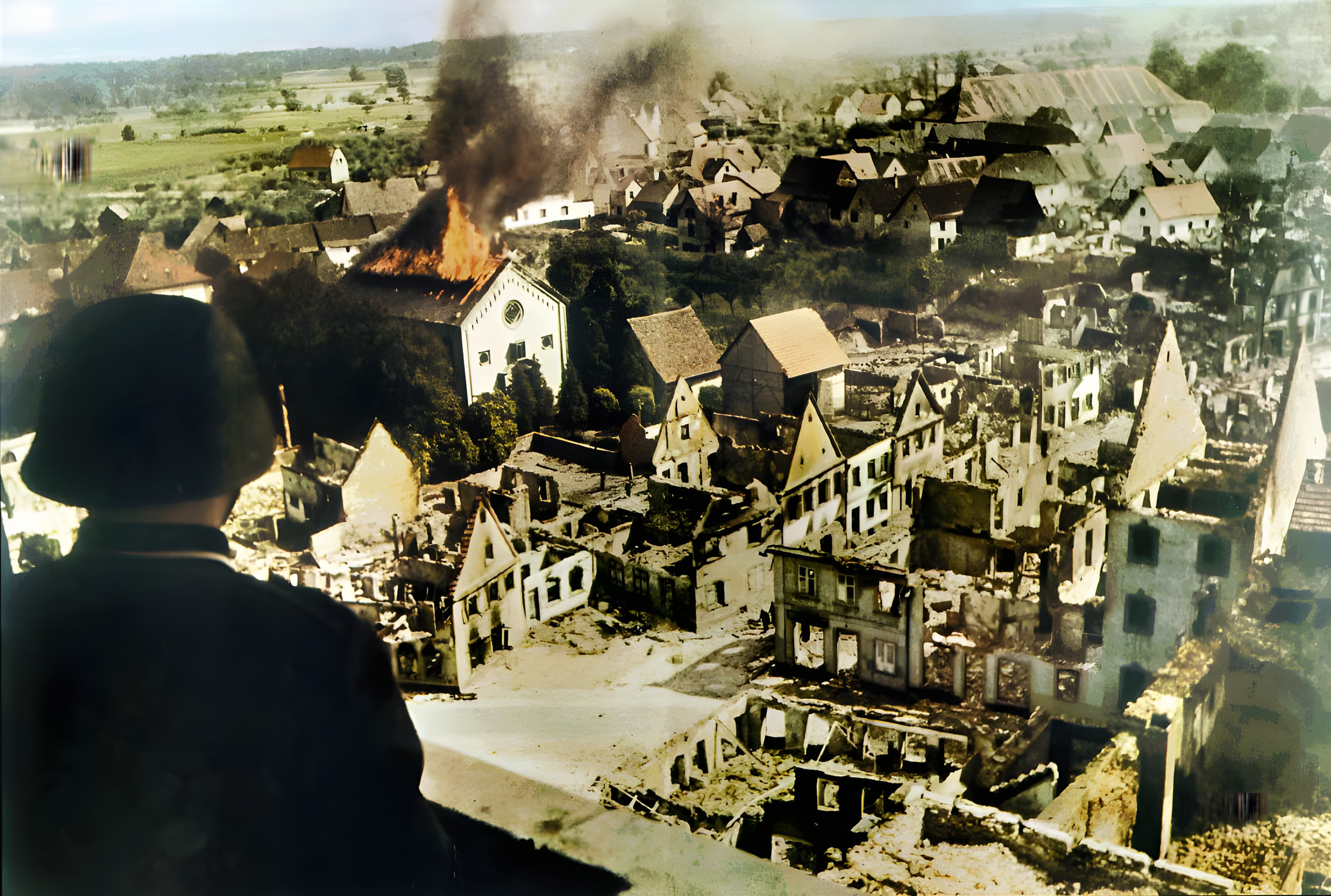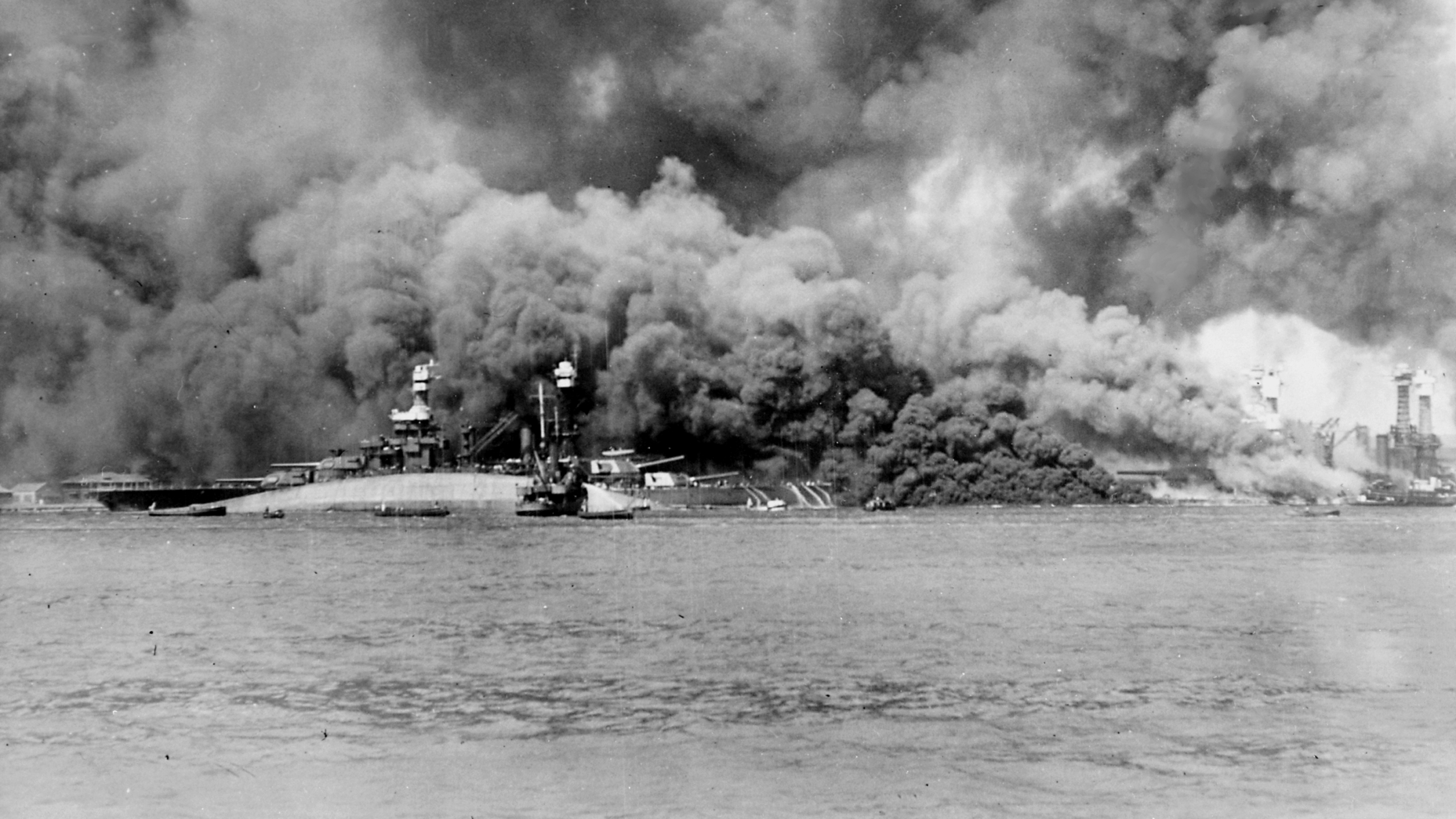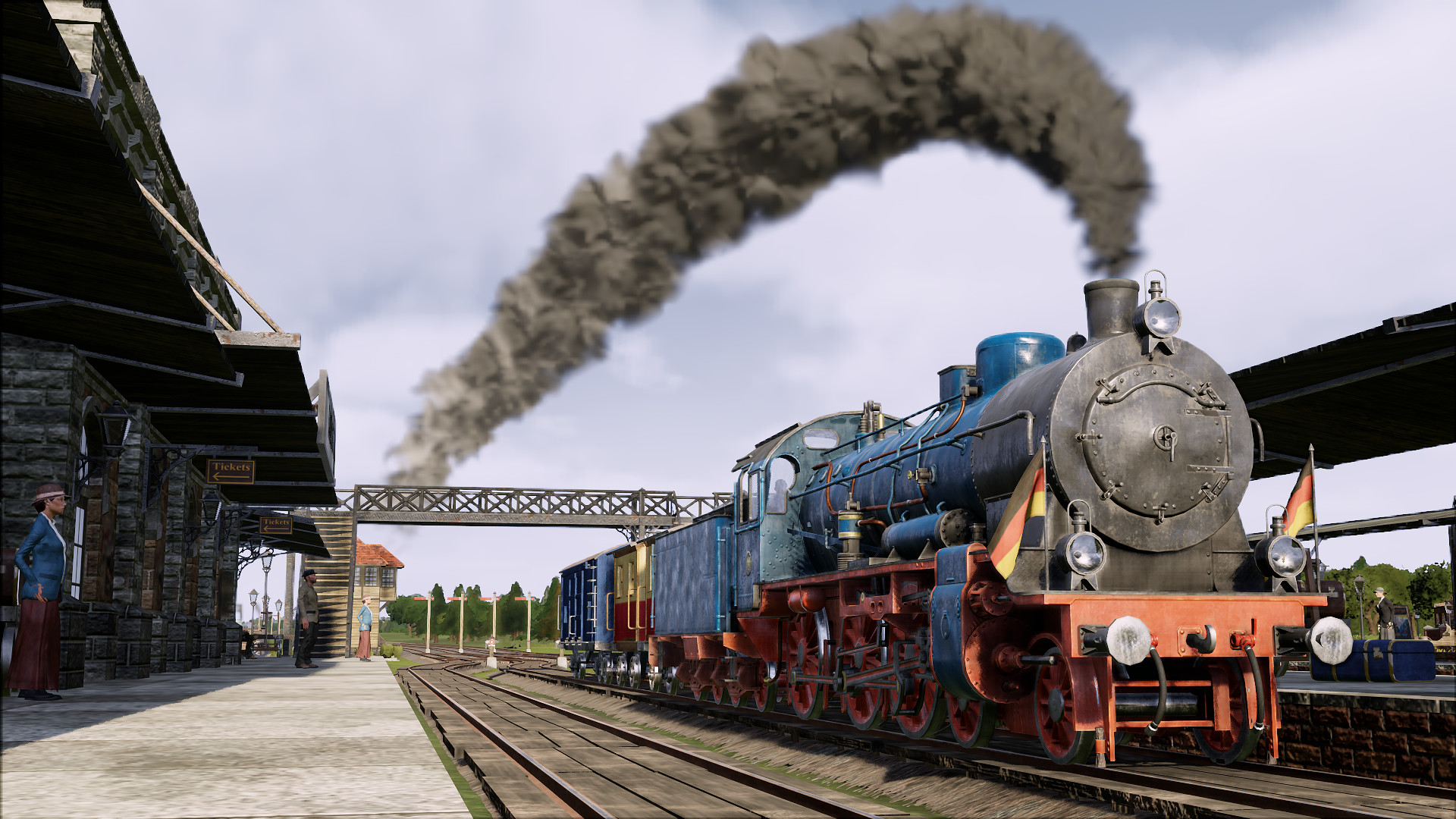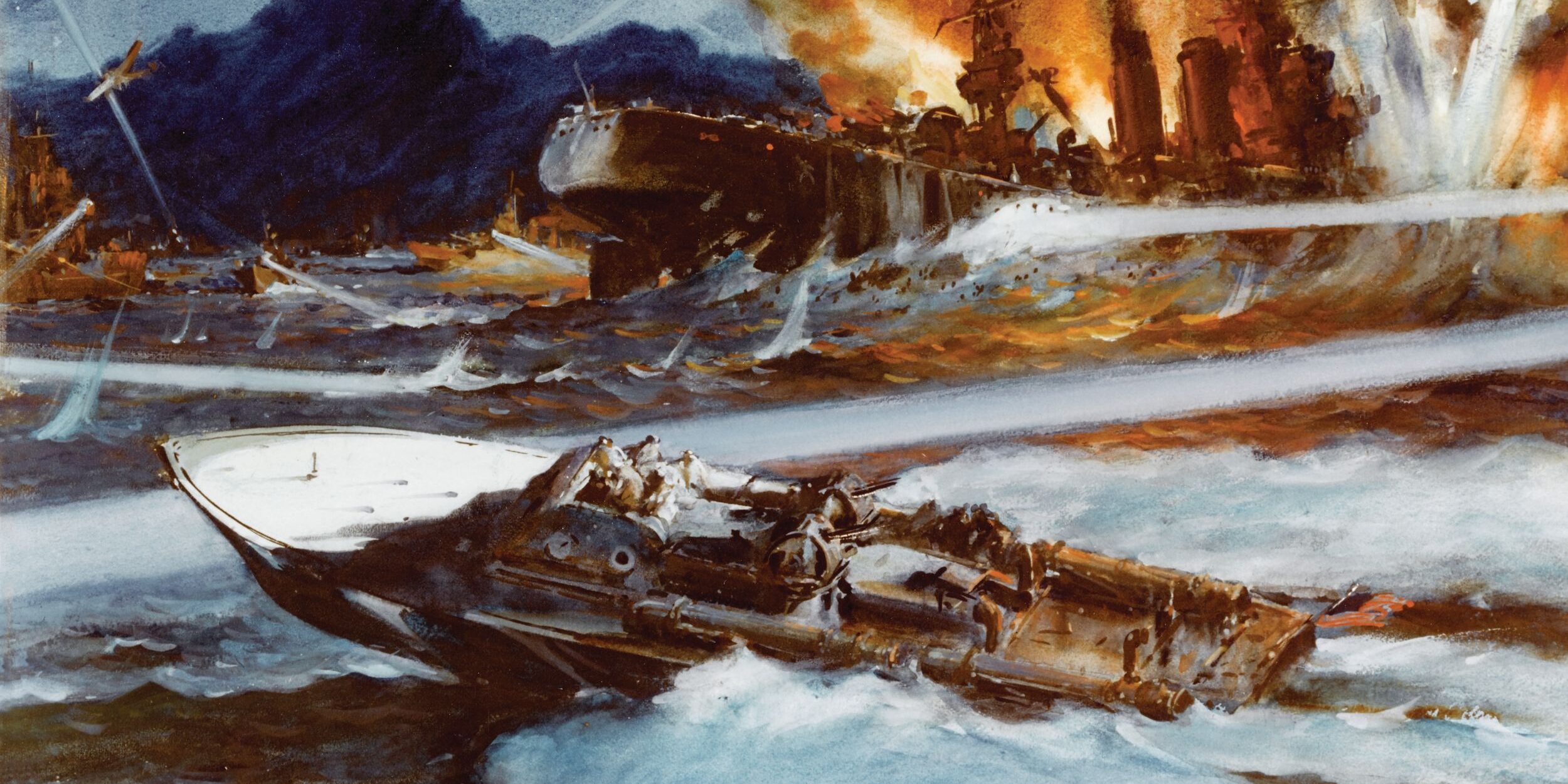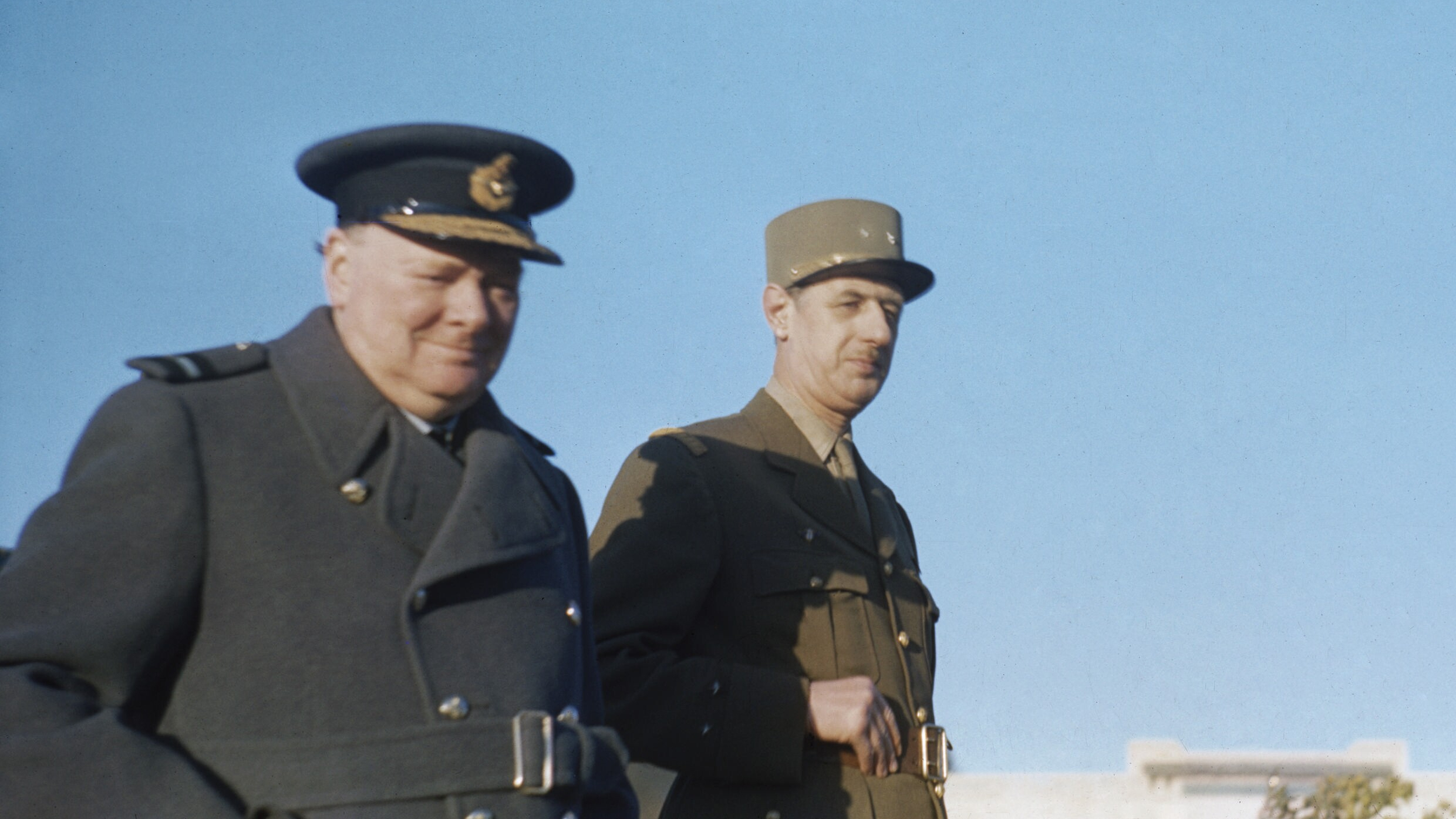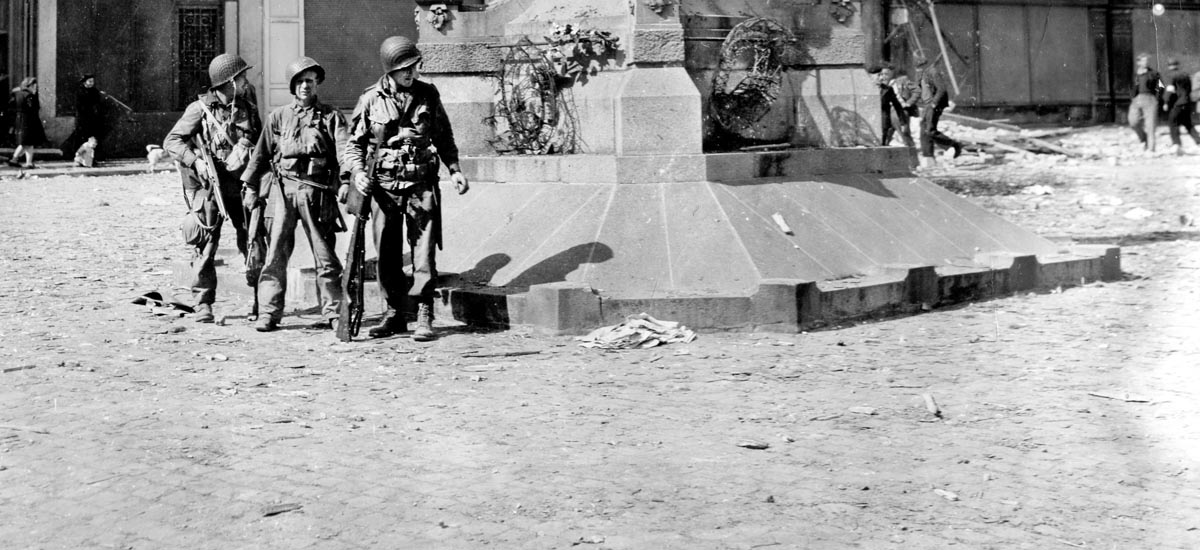By Mason B.Webb
It was February 1945, and the Bombing of Dresden had yet to commence. At this point in the war, the citizens of the capital of the German state of Saxony were beginning to think that they were living a charmed life. After all, they knew that every other major German city except theirs had been flattened by countless Allied air raids since 1940.
And yet here they were, virtually untouched. (Dresden had, in fact, been first bombed by the U.S. Eighth Air Force on October 7, 1944, and again on January 16, 1945, but the damage and casualties were minimal.)
Perhaps the Dresdeners felt lucky because the city on the Elbe River, 120 miles south of Berlin, was well known as a cultural treasure—the “Florence on the Elbe” and the “Jewel Box”—and was regarded as one the world’s most beautiful cities for its architecture and museums, with few industrial or military sites worth bombing.
Among its treasures were the baroque Zwinger Palace, the State Opera House known as the Semper Oper, and the Frauenkirche, the latter built in the 1700s. Here too, the world-famous Dresden china and porcelain had been made for decades. There seemed no good reason for the status quo to change.
But Dresden’s luck was about to run out.
“I Can Assure You, Gentlemen, That We Tolerate no Scruples.”
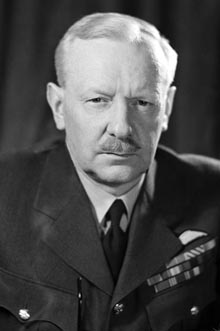
Air Chief Marshal Arthur “Bomber” Harris, head of Britain’s Royal Air Force Bomber Command, had a special desire to wipe every major German city off the map, even though it was plainly obvious that targets were becoming fewer, and the end of the war was just weeks away.
Early in the war, British Chief of the Air Staff Charles Portal had calculated that a concerted program to bomb the Third Reich’s cities could kill 900,000 people in 18 months, seriously injure a million more, destroy six million homes, and leave 25 million Germans homeless, thus creating a humanitarian crisis that, he believed, would lead to the collapse of the Nazi government.
In 1941, Harris had said that he had been intentionally bombing civilians for a year. “I mention this,” he said, “because, for a long time, the Government, for excellent reasons, has preferred the world to think that we still held some scruples and attacked only what the humanitarians are pleased to call ‘military targets.’ I can assure you, gentlemen, that we tolerate no scruples.”
Harris was no doubt remembering that the German Luftwaffe had first engaged in “area bombing tactics” when it helped Francisco Franco in his civil war to topple the Spanish government in 1937, and then again when it bombed Polish cities during Germany’s invasion of Poland in September 1939. Still in the forefront of his mind was the Luftwaffe’s indiscriminate bombing of London and other British cities during the Battle of Britain in 1940.
Germany Ramps up its Attacks on Great Britain
Albert Speer, Nazi Germany’s Minister of Armaments, recalled a meeting in 1940 when Adolf Hitler endorsed Luftwaffe chief Hermann Göring’s proposal to hit London with a massive number of incendiary bombs: “Göring wants to use innumerable incendiary bombs of an altogether new type to create fires in all parts of London. Fires everywhere. Thousands of them. Then they’ll unite in one giant area conflagration.”
“Göring has the right idea,” said Hitler. “Explosive bombs don’t work, but it can be done with incendiary bombs—total destruction of London. Of what use will their fire department be once that really starts?”
Out to avenge the bombings of London, Coventry, Plymouth, Portsmouth, Southampton, Bath, Bristol, Birmingham, Sheffield, Leeds, Liverpool, Manchester, Glasgow, Newcastle, and other cities, the Royal Air Force struck back hard at German population centers. In 1942, the U.S. Eighth Air Force set up shop in Britain and in 1943 began bombing Germany in earnest along with its British counterparts.
To retaliate, German rocket scientists (such as Werner von Braun) developed the world’s first long-range offensive missile in 1944. Hitler named it the V-1, for “Vergeltung”—the German word for “vengeance”—and ordered the Luftwaffe to step up attacks against Great Britain.
Why Dresden Became a Target for Bombing
Dresden had a population of 630,000, making it Germany’s seventh largest city. But a flood of refugees fleeing the Soviet advance in the East had swelled the population to over a million by early February 1945.
And the city was woefully unprepared for any sort of major aerial attack. Most of the antiaircraft batteries that ringed it had been removed to protect other cities.
In early 1945, the handwriting was on the wall: Nazi Germany was doomed. In January, the advancing Soviets had uncovered the death factory at Auschwitz in Poland. This exposed the Nazis’ crimes for all to see, further hardening Allied resolve to totally destroy the Third Reich—to drive a silver stake into its heart so that it could never rise again.
In northeastern Germany, the Red Army had captured East Prussia and reached the Oder River, less than 50 miles from Berlin, and was bulldozing its way toward the German capital.
From February 4 to February 11, the “Big Three” Allied leaders—U.S. President Franklin Roosevelt, British Prime Minister Winston Churchill, and Soviet Premier Joseph Stalin—met at Yalta in the Soviet Crimea (the Argonaut Conference) and hammered out their visions of the postwar world.
Other than deciding on how German territory would be carved up and administered by which power, there was little discussion about how the final military operations would be conducted. However, after General Aleksei Antonov, deputy chief of the Soviet General Staff, requested that the Allies apply some of their aerial firepower in the East, Churchill and Roosevelt promised Stalin that they would continue their bombing campaign against Germany to aid the advance of Soviet forces.
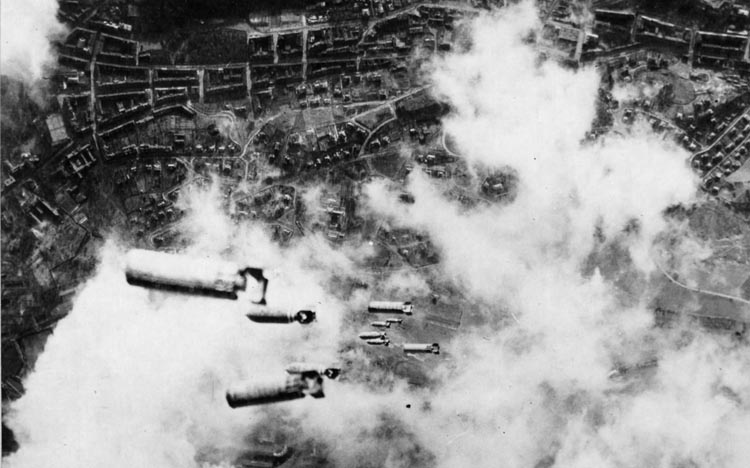
Dresden, therefore, became a target in early 1945. Allied intelligence revealed that, far from being an inoffensive center of culture, Dresden and the surrounding area was home to 127 factories that manufactured everything from rifles and machine guns to artillery pieces, aircraft components, precision optical devices, and poison gas (the latter manufactured by Chemische Fabrik Goye, GmbH).
Dresden was also a key rail hub, with lines running to Berlin, Prague, Vienna, Munich, Breslau, Leipzig, and Hamburg. The Wehrmacht’s headquarters had also been relocated from Berlin to the Taschenbergpalais in Dresden, and there were at least one ammunition depot and several military hospitals.
The Joint Chiefs of Staff of both the United States and Britain had earlier in the war authorized the aerial attacks on German cities to accomplish “the progressive destruction and dislocation of the German military, industrial, and economic system, and the undermining of the morale of the German people to a point where their capacity for armed resistance is fatally weakened.”
Colonel Harold E. Cook, an American prisoner of the Germans in Dresden, stated after the war, “I saw with my own eyes that Dresden was an armed camp: thousands of German troops, tanks, and artillery, and miles of freight cars loaded with supplies supporting and transporting German logistics toward the east to meet the Russians.”
Thus, RAF Bomber Command and the U.S. Army Air Forces (USAAF) determined that Dresden was a legitimate military target and decided to mount a joint attack on the city at the direct request of the Soviet government. There would be four separate raids commencing on February 13. Seven hundred and twenty-two heavy bombers of the British Royal Air Force and 527 of the USAAF would drop more than 3,900 tons of high explosives and incendiary devices as part of the planned bombing of Dresden.
Hellish Firestorm: The Bombing’s Two Waves
The U.S. Eighth Air Force was scheduled to fly the initial strikes during the bombing of Dresden on February 13 but they were canceled because of poor weather. The weather did not stop Bomber Command, however. A historian wrote, “To support the attack, Bomber Command dispatched several diversionary raids designed to confuse the German air defenses.
“These struck targets in Bonn, Magdeburg, Nuremberg, Böhlen, and Misburg, near Hannover. For Dresden, the attack was to come in two waves, with the second coming three hours after the first. This approach was designed to catch German emergency response teams exposed and increase casualties.”
The first wave was a flight of Avro Lancaster bombers from 83 Squadron, No. 5 Group, based at RAF Coningsby. They would be the pathfinders and would light up the target area with incendiaries.
Close on their tails was a group of DeHavilland Mosquitoes that dropped 1,000-pound bombs to mark the aiming points for the rest of the raiders. The main bomber force, consisting of 254 Lancasters, would arrive next with a mixed load of 500 tons of high-explosive bombs and 375 tons of incendiaries.
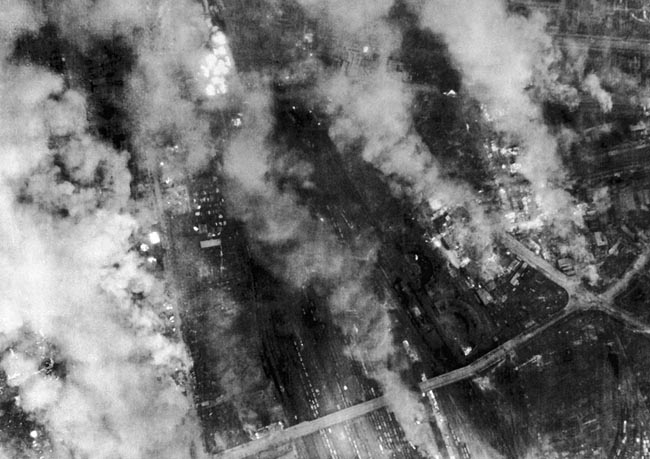
As the RAF bombers approached, air raid sirens began wailing across Dresden at 9:51 pm. Because the city lacked adequate bomb shelters, many civilians took to their basements. Thirteen minutes later the incendiary bombs began falling on Dresden, setting whole blocks ablaze.
Fire brigades rushed into the heart of the burning city, working without success to contain the fires that were now devouring block after block of apartments, shops, churches, and historic structures. The firemen were fighting a losing battle, struggling with broken water mains and having to run lines to the Elbe River.
Soon Dresden was engulfed in the kind of hellish firestorm that had destroyed Hamburg in July 1943 and killed 41,800 people. Tornado-like winds roared through the city, sucking up oxygen and feeding the inferno.
A British paratrooper, Victor Gregg, who had been taken prisoner at Arnhem, Holland, was a POW at Dresden, and he said, “The people of Dresden believed that as long as the Luftwaffe kept away from Oxford, Dresden would be spared.”
Such was not the case, however. Gregg said that about 10:30 pm on the night of February 13, “The air raid sirens started their mournful wailing and because this happened every night, no notice was taken. The sirens stopped and, after a short period of silence, the first wave of pathfinders was over the city, dropping its target flares.
“As the incendiaries fell, the phosphorus clung to the bodies of those below, turning them into human torches. The screaming of those who were being burned alive was added to the cries of those not yet hit. There was no need for flares to lead the second wave of bombers to their target, as the whole city had become a gigantic torch. It must have been visible to the pilots from a hundred miles away. Dresden had no defenses, no antiaircraft guns, no searchlights, nothing.” (Read more about the bombing operations that shaped the Second World War inside WWII History magazine.)
“We saw terrible things”: Accounts from Dresdeners
In a 2014 BBC interview, Gregg further recalled that the POWs were sent into the city on a detail to search for survivors. In one incident, it took his team seven hours just to get into a 1,000-person air raid shelter where they found no survivors or corpses—just a green-brown liquid with bones sticking out of it; what had once been a group of human beings had all been melted by the intense heat. He also noted that, in areas farther from the town center, he and his team found adults shriveled to three feet in length. (Gregg wrote a book about his experiences titled Dresden: A Survivor’s Story.)
A civilian survivor, Lothar Metzger, and his mother, wife, and twin children had taken refuge in a cellar with many others. He recalled that it was “not possible to describe! Explosion after explosion. It was beyond belief, worse than the blackest nightmare. So many people were horribly burnt and injured. It became more and more difficult to breathe. It was dark, and all of us tried to leave this cellar with inconceivable panic.
“Dead and dying people were trampled upon, luggage was left or snatched up out of our hands by rescuers. The basket with our twins covered with wet cloths was snatched up out of my mother’s hands, and we were pushed upstairs by the people behind us. We saw the burning street, the falling ruins, and the terrible firestorm. My mother covered us with wet blankets and coats she found in a water tub.”
Metzger continued: “We saw terrible things: cremated adults shrunk to the size of small children, pieces of arms and legs, dead people, whole families burnt to death. Burning people ran to and fro, burnt coaches filled with civilian refugees, dead rescuers and soldiers, many were calling and looking for their children and families, and fire everywhere, everywhere fire, and all the time the hot wind of the firestorm threw people back into the burning houses they were trying to escape from.”
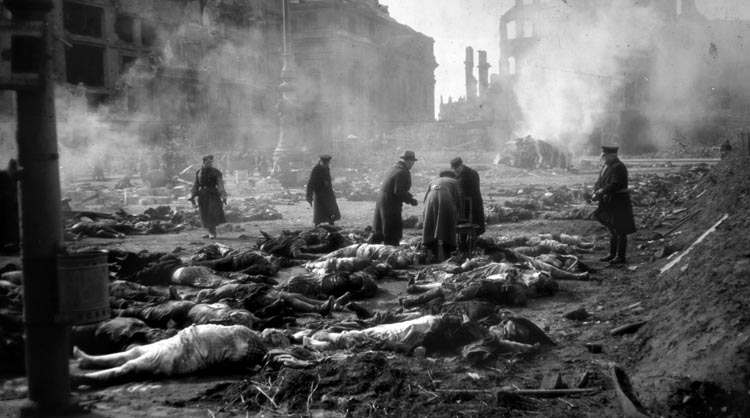
Another Dresdener, Margeret Freyer, also never forgot the horror she witnessed. “To my left I suddenly see a woman. I can see her to this day and shall never forget it. She carries a bundle in her arms. It is a baby. She runs, she falls, and the child flies in an arc into the fire. Suddenly, I saw people again, right in front of me. They scream and gesticulate with their hands, and then—to my utter horror and amazement—I see how one after the other they simply seem to let themselves drop to the ground. Today I know that these unfortunate people were the victims of a lack of oxygen. They fainted and then burnt to cinders.
“Insane fear grips me and from then on I repeat one simple sentence to myself continuously: ‘I don’t want to burn to death.’ I do not know how many people I fell over. I know only one thing: that I must not burn.”
Other Germans who survived had vivid, horrible memories that stayed with them for the rest of their lives. Nora Lang was 13 years old when the bombers struck and set fire to her family’s apartment building. The family ran to the neighborhood air raid shelter, and when the “all clear” sounded, they emerged to a vision of Hell. “Behind us everything was burning,” she recalled, “[and] in front of us everything was burning.”
Anita John, 12 in 1945, said that when she and her parents rushed to the cellar of their apartment building with 13 neighbors during the first raid, her mother covered her with her body to protect her. Once the bombing stopped, Anita emerged from the cellar after but could not find her parents. She only realized that they were dead when she saw their bodies laid out in the street in front of the rubble of the building; all the other people in the cellar, including her parents, had suffocated due to the firestorm that sucked almost all the oxygen out of the basement. How she survived she did not know.
Thirteen-year-old Karl-Heinrich Fiebiger was home alone when the attacks began. He ran for safety through the burning city to no place in particular. He remembered a sticky substance released by the bombs raining down and getting in his hair. After he ran from his family’s apartment building, it was destroyed by a bomb; his older sister and her two small children died. It took three weeks before he was reunited with his mother.
Another survivor, Hanns Voight, said later, “Never had I expected to see people interred in that state: burnt, cremated, torn and crushed to death. Sometimes the victims looked like ordinary people apparently peacefully sleeping. The faces of others were wracked with pain, the bodies stripped almost naked by the [fire] tornado…. Here the victim was a shapeless slab, there a layer of ashes shoveled into a zinc tub.”
Kurt Vonnegut Witnesses the Attack
About a half hour after the first wave struck, a group of Messerschmitt Me-110 night fighters lifted off from the Luftwaffe’s Klotzsche airfield, five miles north of Dresden, but they were too late to intercept the first bombers; due to the shortage of aviation fuel, the planes had not been allowed to take off until receiving specific authorization from higher headquarters. And, with most of its antiaircraft guns having been removed to defend elsewhere, Dresden was essentially undefended as the bombers struck—a sitting duck.
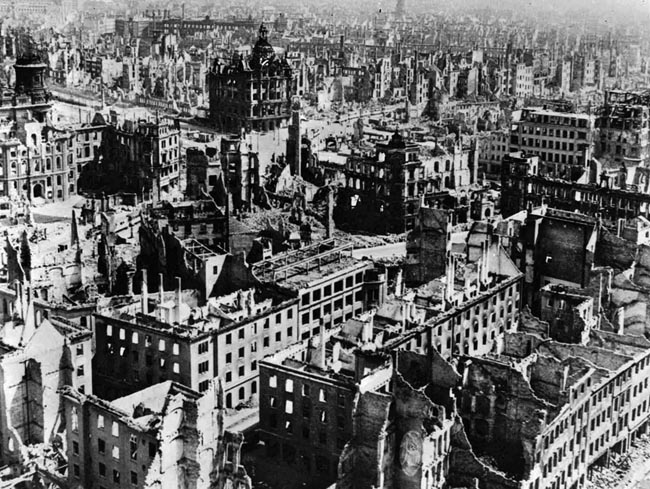
Three hours after the first strike, while the firefighters were still struggling to put out the inferno, the main force of 529 bombers came over and added to the destruction with more bombs. By dawn on the 14th, hundreds of British bombers had swept over Dresden and dropped more than 1,400 tons of high-explosive bombs and more than 1,100 tons of incendiaries.
On the morning of February 14, the bombing of Dresden left the city dying and burning, its own funeral pyre. But its agony was not yet over.
The next day it was the U.S. Eighth Air Force’s turn. A force of 316 Boeing B-17s arrived and bombed through cloud cover using H2X—a new ground-scanning radar developed for bombing when the target could not be visually sighted. Some of the bombers flew off course, and instead of bombing Dresden, hit Prague in Czechoslovakia, 120 miles to the south-southeast. The “Mighty Eighth” dropped more than 950 tons of high-explosive bombs and more than 290 tons of incendiaries on Dresden that day.
The cloud cover was still thick, so the bombs were dropped again using H2X radar. The southeastern suburbs and two nearby towns were hit this time, along with bridges, train stations, depots, warehouses, and railroad marshaling yards.
Kurt Vonnegut, a private serving in the 423rd Infantry Regiment, 106th Infantry Division, was one of thousands of Americans captured by the Germans in December 1944 during the Battle of the Bulge. Transported to Dresden, Vonnegut was housed, not in a regular POW camp, but in a large building used as a slaughterhouse.
Luckily, Vonnegut and the other POWs with him survived the bombings and firestorm. (He would use his experiences in Dresden as the basis for his 1969 semi-autobiographical historical novel, Slaughterhouse Five.)
After the second raid, his captors put him and the other prisoners to work retrieving bodies for mass burial. “But there were too many corpses to bury,” he said. “So instead the Nazis sent in troops with flamethrowers. All these civilians’ remains were burned to ashes.”
In a new introduction to the 1976 reprint of the novel, Vonnegut wrote, “The Dresden atrocity, tremendously expensive and meticulously planned, was so meaningless, finally, that only one person on the entire planet got any benefit from it. I am that person. I wrote this book, which earned a lot of money for me and made my reputation, such as it is. One way or another, I got two or three dollars for every person killed. Some business I’m in.”
Life magazine also noted, “Dresden’s authorities finally cordoned off the center of the city and set up 25-foot-long
grills where thousands of the victims were cremated.”
Tens of Thousands of Buildings Destroyed by 2,700 tons of U.S. Bombs
In the aftermath of the attacks, Nazi propaganda minister Joseph Goebbels, attempting to gain sympathy from the international community, stated that Dresden was only a historic city of culture and that it held no war industries. The Third Reich also inflated the number of casualties, claiming that more than 200,000 civilians had been killed. (That figure has been repeated for decades, but in 2008 an independent historical commission formed by the city of Dresden concluded that approximately 25,000 persons died in Dresden and another 30,000 were injured—still a tremendous number.)
The city itself was a silent, dead, burned-out shell. Thousands of structures had been destroyed in a 15-square-mile radius. There was no electricity or water. No vehicles moved. The stench of burned wood and human flesh hung over the city like a shroud, and Dresden’s architectural treasures lay in ruins. A handful of stunned survivors picked their way through the still-burning rubble, searching for relatives or anything of value.
The RAF reported that 78,000 dwellings had been totally destroyed, with another 27,700 left uninhabitable and a further 64,500 damaged but repairable.
In March and April, nearly 1,000 U.S. Eighth Air Force planes would return and drop more than 2,700 tons of bombs on Dresden before Germany surrendered.
Was the Bombing of Dresden Justified?
Within days after the February attacks, the claimed necessity of the bombing of Dresden came under scrutiny. A number of critics have questioned the tactics used and have even accused the British and Americans of “indiscriminate terror bombing”—a phrase that had been used to condemn the Germans’ use of saturation bombing of civilians in cities in Poland, Britain, Belgium, and elsewhere.
In March 1945, Churchill himself sent a memo intended for the British Chiefs of Staff and the Chief of the Air Staff: “It seems to me that the moment has come when the question of bombing of German cities simply for the sake of increasing the terror, though under other pretexts, should be reviewed. Otherwise we shall come into control of an utterly ruined land….
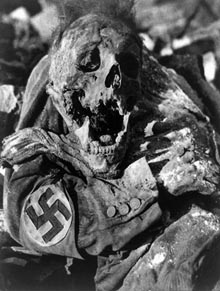
“The destruction of Dresden remains a serious query against the conduct of Allied bombing. I am of the opinion that military objectives must henceforward be more strictly studied in our own interests than that of the enemy. The Foreign Secretary has spoken to me on this subject, and I feel the need for more precise concentration upon military objectives such as oil and communications behind the immediate battle-zone, rather than on mere acts of terror and wanton destruction, however impressive.”
In response, Chief Air Marshal Arthur Harris wrote, “I assume that the view under consideration is something like this: no doubt in the past we were justified in attacking German cities. But to do so was always repugnant and now that the Germans are beaten anyway, we can properly abstain from proceeding with these attacks.
“This is a doctrine to which I could never subscribe. Attacks on cities, like any other act of war, are intolerable unless they are strategically justified. But they are strategically justified in so far as they tend to shorten the war and preserve the lives of Allied soldiers. To my mind we have absolutely no right to give them up unless it is certain that they will not have this effect. I do not personally regard the whole of the remaining cities of Germany as worth the bones of one British Grenadier….
“Actually Dresden was a mass of munitions works, an intact government centre, and a key transportation point to the East. It is now none of these things.”
In the United States, U.S. Army Chief of Staff General George C. Marshall, who also felt the heat from the destruction of Dresden, authorized an inquiry that came to the conclusion that the raid, based on the intelligence available, was fully justified because Dresden was a place through which German forces could be moved to reinforce their lines on the Eastern Front.
Some historians also believe that Roosevelt and Churchill worried that after the war their ally Stalin and the USSR might become a threat and wanted the obliteration of Dresden to serve as a demonstration of Allied military power—and a warning to Stalin to not challenge the West.
For his part, Air Chief Marshal Harris never softened or wavered from his view that conducting saturation bombings of German cities was completely necessary. “The Germans started the war,” was his firm conviction until the day he died in 1984.
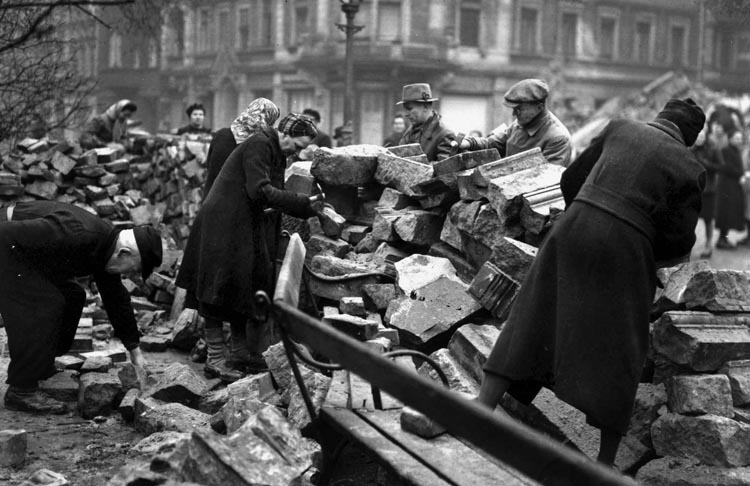
(Unfortunately, the historical record shows that the first intentional “area bombing” of civilians in World War II was conducted by the RAF against Mönchengladbach, Germany, on May 11, 1940, on Churchill’s orders the day after he became prime minister, and four months before the Luftwaffe began its Blitz of British cities.)
Harris continued, “The Nazis entered this war under the rather childish delusion that they were going to bomb everyone else, and nobody was going to bomb them. At Rotterdam, London, Warsaw, and half a hundred other places, they put their rather naive theory into operation. They sowed the wind, and now they are going to reap the whirlwind.”
In his postwar memoir, Bomber Command, Harris wrote, “I know that the destruction of so large and splendid a city at this late stage of the war was considered unnecessary even by a good many people who admit that our earlier attacks were as fully justified as any other operation of war. Here I will only say that the attack on Dresden was at the time considered a military necessity by much more important people than myself.”
A historian wrote, “Few mourned the destruction of German cities that built the weapons and bred the soldiers that by 1945 had killed more than 10 million Allied soldiers and even more civilians. The firebombing of Dresden would prove the exception to this rule,” and many of the generals and airmen of Britain and the United States have since been criticized by some as being no better than the Nazi war criminals.
At the end of the war, Dresden was so badly damaged and beyond repair that much the city was basically leveled by dynamite and bulldozers. However, a handful of ruined historic buildings—the Frauenkirche, Zwinger Palace, State Opera House, and several others—were carefully reconstructed to their former glory out of the rubble, but the rest of the city was rebuilt in the ugly “socialist modern” style.
Today Dresden has experienced a renaissance and returned to life as one of Germany’s most important cities—a center of education and technological advancement.
Regardless, the debate over the attacks of February 13 and 15, 1945, continues to this day and those attacks remain as one of the more controversial actions of World War II.
Perhaps the last word should go to British historian Frederick Taylor, who wrote, “The destruction of Dresden has an epically tragic quality to it. It was a wonderfully beautiful city and a symbol of baroque humanism and all that was best in Germany. It also contained all of the worst from Germany during the Nazi period. In that sense it is an absolutely exemplary tragedy for the horrors of 20th century warfare and a symbol of destruction.”
